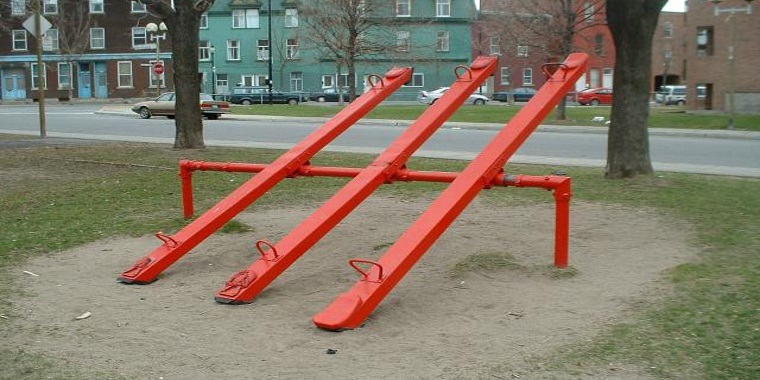Today’s post is all about levers. Remember those from high school physics? If you had to take physics, you definitely covered mechanical levers. If you didn’t but have ever been on a teeter-totter then you will understand the importance of today’s post.
Upright posture, works just like a child’s teeter-totter (aka seesaw for those in Europe). In order to balance, the weight of each child needs to be similar.
Free Posture Crash Course!
Discover the crazy, simple 3-step formula that will teach you how to improve your posture and flexibility like a pro. You will learn how to hardwire the habit of good posture, reduce forward head and the secret way to stop slouching. It's 100% free!
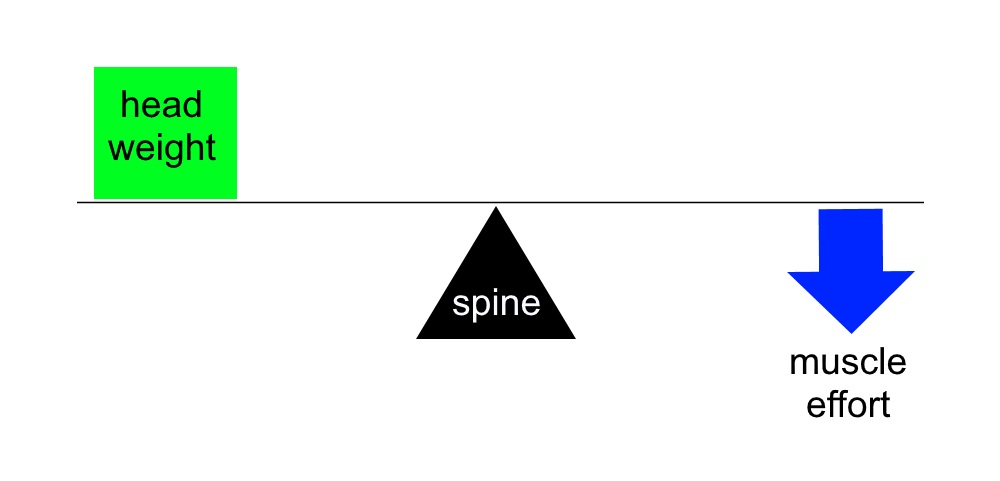
If your head sits directly over top of the spine, then the weight of the head (roughly 10 Ibs) requires little muscular effort from your neck muscles. In other words, when you have good posture, your head sits directly over the fulcrum.
Your spine – made up of vertebrae, discs and joints is considered the fulcrum (your center of gravity). Your head needs to sit right on top of your spinal column, or your neck and upper back muscles begin to work overtime, to support the increased load. Let me use a diagram to explain this concept:
Forward Head Posture
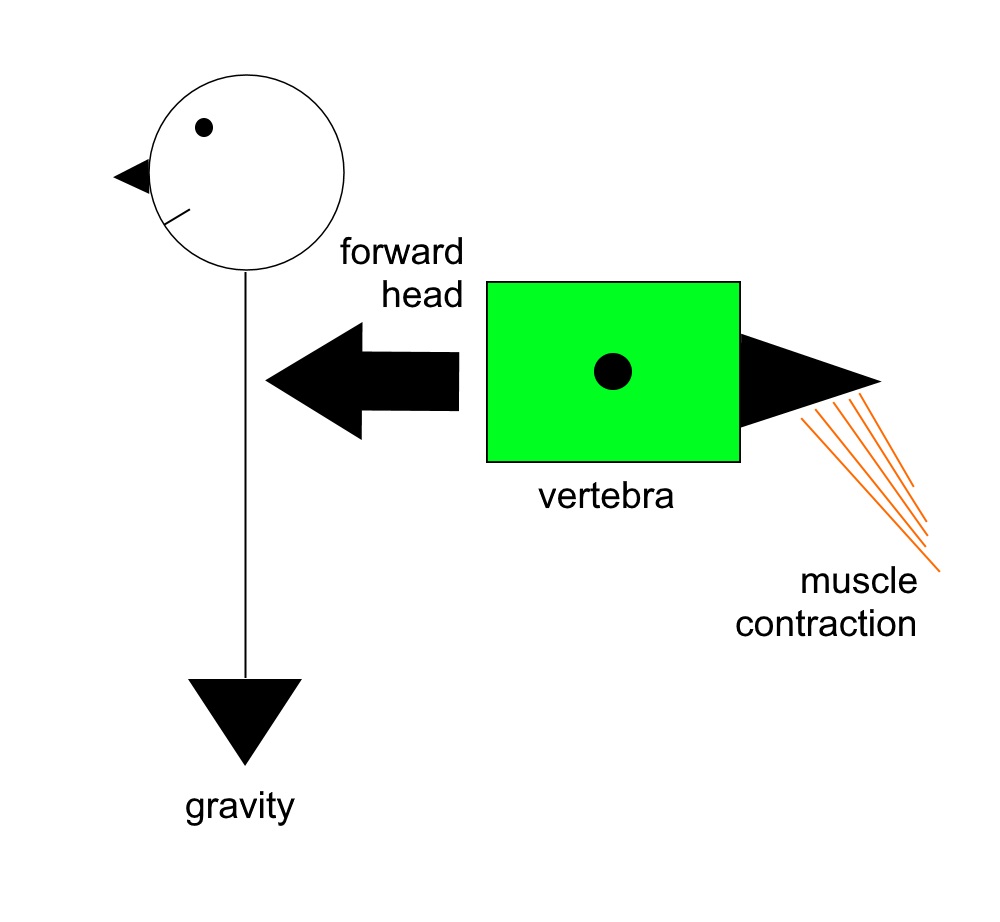
In this example a 10 pound head is the weight, the vertebra is the fulcrum and the muscle contraction is the effort needed to support your head.
When the head sits out in front of the body, instead of overtop of the spine where it belongs, we call this forward head posture (fhp).
Further Resources >> How do You Correct a Forward Head?
Using physics we work out the effort required by multiplying the weight (head) by the lever arm (the distance from the fulcrum) – the forward head measurement.
If you have 1 inch of fhp, your muscles require 10 Ibs (10 x 1)of extra effort to maintain your head in this forward position. If you have 2 inches of fhp, your muscles require 20 Ibs (10 x 2) of extra effort.
NOW, DO YOU NOW UNDERSTAND WHY YOUR SHOULDERS ACHE?!
Body weight
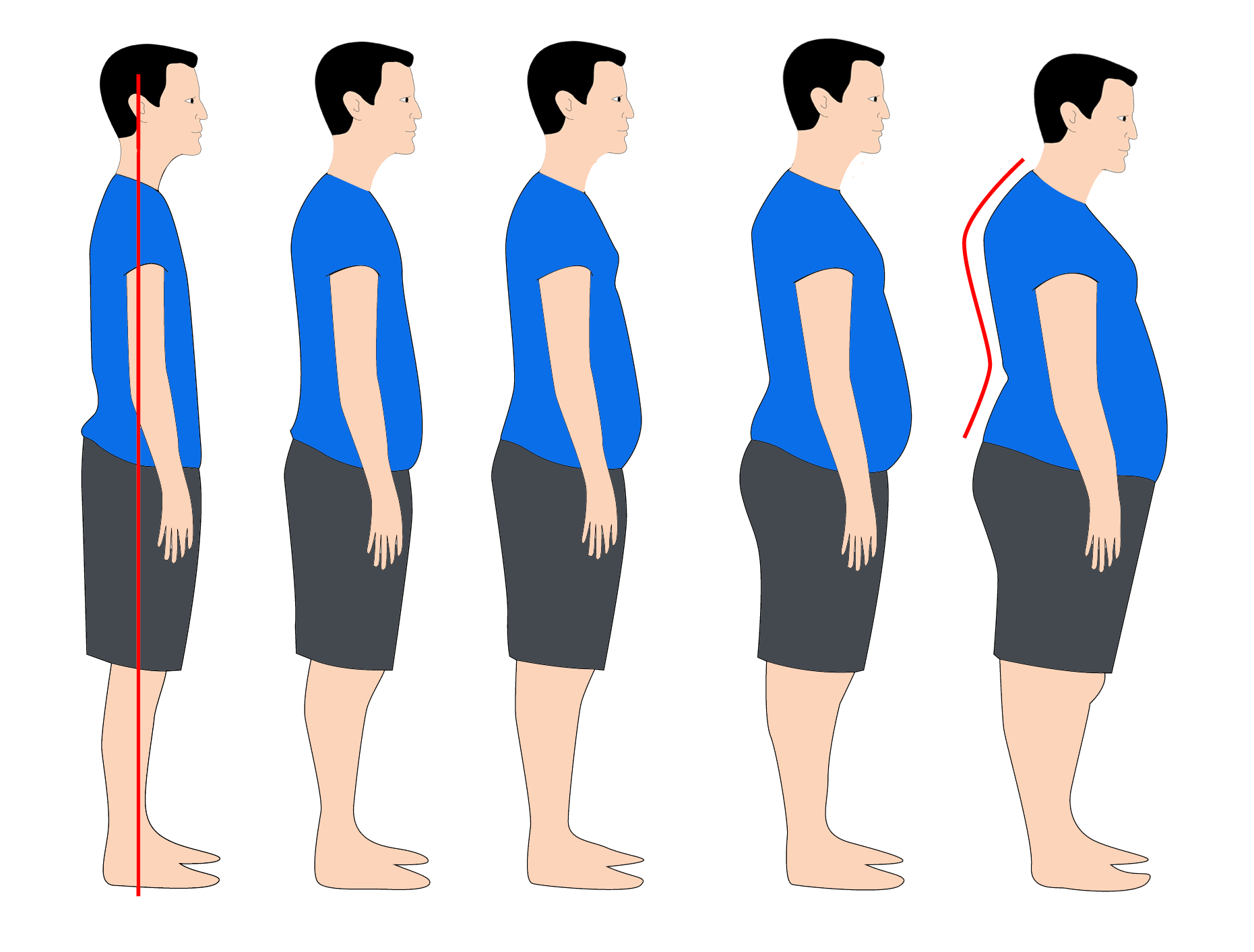
If this example the fulcrum once again, is the spine; the weight this time is the extra abdominal fat and the effort, the lower back muscles (the erector spinae muscles).
If you are lean, then your body is directly in line over top of your center of gravity – found in the center of the vertebra – and your body is balanced. This requires minimal muscular effort.
As your body weight increases, gravity pulls your body forward and down (over tipping your pelvis forward). In order to offset the weight the muscular effort increases, often leading to chronic lower back pain.
Short Leg
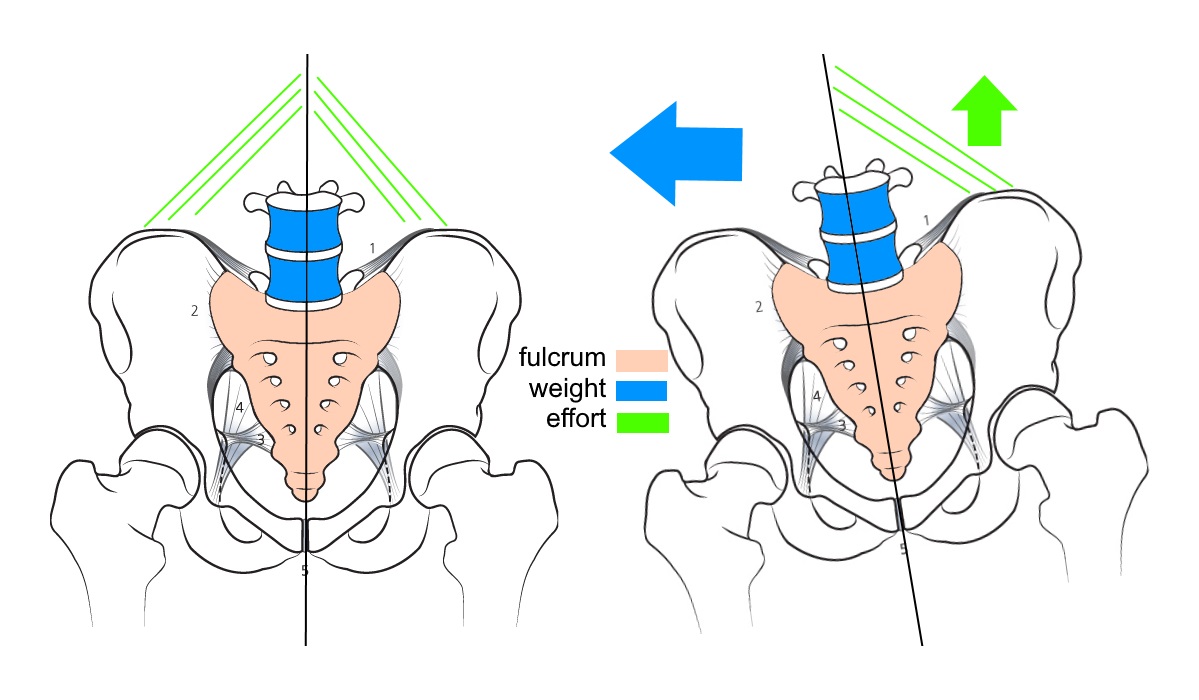
If you have a long history of one-sided lower back pain, you may have an anatomical short leg (as I do). In the above example, the fulcrum is your sacrum (the triangular bone to which your spine anchors).
The weight is your leaning body caused by a right-sided short leg (the subject is facing you) and the effort is the increased muscular contraction (in green) of the quadratus lumborum muscle (known as the QL). This is a very common source of one-sided lower back pain. This brought me to see my first Chiropractor in my early 20s.
Further Resources: Posture Analysis
So the moral of this posture story? Upright posture is a first class mechanical lever – to use mechanic’s speak. Postural distortions like forward head posture, being over-weight or having an anatomical short leg lead to chronic muscular contraction, which leads to tissue ischemia (cut off blood supply), inflammation, fibrosis (scar tissue) and disability – reduced range of motion, inflexibility, chronic pain and eventual wear and tear – aka osteoarthritis.
These are only the physical effects. There are also neurological effects. I’ll save that story for another day. I really want you to understand that poor posture is so much more than how you sit or stand.
The effects are very real. You can’t afford to ignore your poor posture for even one more day.

